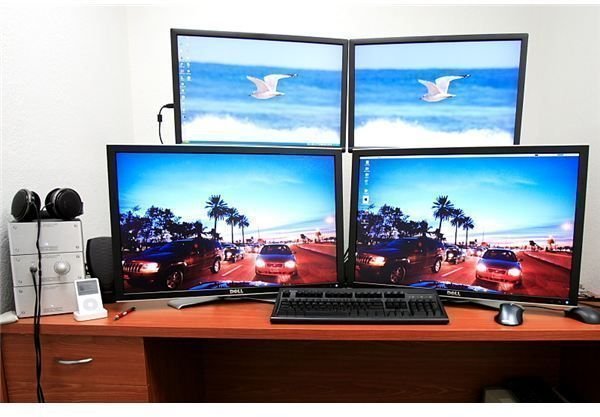Tips On How to Build a Video Editing Computer Workstation
Introduction
Consumer-priced pro-quality video cameras along with video-sharing sites like YouTube are becoming more and more popular. Consequently, it is now easier for amateur and novice filmmakers to create their own films and share them with the world. After shooting your footage comes the daunting task of editing it into a coherent movie. This process can be made easier with the right equipment and this begins with building yourself a personalized video editing computer workstation. Outlined in this guide are tips to everything you will need to get yourself started and speed up the editing process.
Photo by totalAldo
Powerful Desktop Computer
Efficient and fast editing starts with a powerful desktop computer. There is no doubt that a desktop will give you the most bang for your buck and will come out faster than even the best laptops on the market. A desktop is not portable like a laptop, but neither are many of the items that will be listed here which belong in a productive workstation. A desktop allows for future expansion and greater connectivity over a laptop. It has the capability to store numerous hard drives, expansion cards, and the potential to upgrade components in the future.
Laptops do have their place in the video editing workflow. In the field, laptops are useful at capturing and storing your footage and doing basic edits and reviewing your work. You can use a laptop to download and organize your media. Once at home or in the office, you can simply transfer your files to a desktop where the serious work begins.
Extra Storage
There’s no doubt about it, HD movies take up an enormous amount of space. As cameras get better and resolutions increase, files are only going to become larger, containing more detail and information. This is both good and bad in that it gives you the maximum flexibility when it comes time to edit, but it means spending more on hard drives and backup storage.
When it comes to storage, consider primary hard drives where your data is stored on your computer for editing. You will want a fast hard drive to use as a separate scratch disk that is connected to your computer either internally with a SATA connection or externally with USB 3.0 or Firewire 800 (1934b). See why regular USB 2.0 speeds won’t cut it.
For backups and archives, you need to have redundant storage with RAID 1 to prevent hardware failure from corrupting your files. Also consider off-site storage (or online storage) to further backup your data in case of a fire, flood, or other disasters. Purchase as much backup space as your budget allows and consider purchasing more than you may need because it will fill up fast.
Displays
Movies and photos are a visual experience. You are going to want at least two identical displays for efficient and easy editing. Identical displays allow you to keep consistent colors and resolutions so that all of your windows look the same. This is especially important when it comes to color correction.
Purchase large displays (24”+) with at least high definition resolutions (1920x1080+) and good IPS (as opposed to TN) panels. The investment in two large LCDs will make editing fun and you will be able to see and do more with your time. You can use one for editing and other for previewing your clips!
Audio
Another part of movie making is the audio. Soundtracks, music, and sound convey a large part of your story. When it comes time to edit, it is crucial that you can listen to your sound at a high quality with a pair of studio monitoring headphones or speaker system. Good audio is what separates amateur from pro films. You’ve already went through the trouble of recording good audio, make sure it actually sounds good when you put it all together by being able to listen to it with good audio equipment.
Connectivity
As stated at the beginning of this guide, connectivity is one of the primary reasons a desktop is used. A well-connected desktop is equipped with all the connections you need and plan on using. It means having plenty of USB ports, Firewire 400 and 800 connections, USB 3.0 and eSATA connections for lightning fast drives. It also means having an easy way to connect your camera and download your files with SD and CompactFlash memory card readers.
Conclusion
A good workstation puts everything at your fingertips. It allows you to have everything you need nearby and ready to use. By having all the resources at hand, the only limiting factor will be yourself and your creativity.
